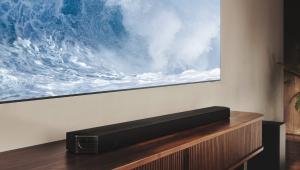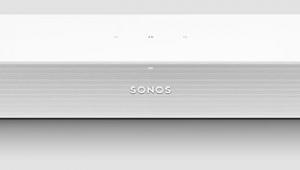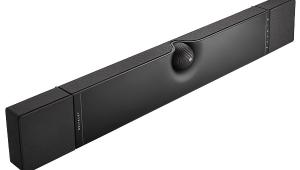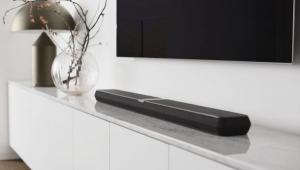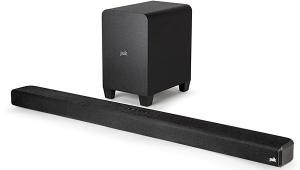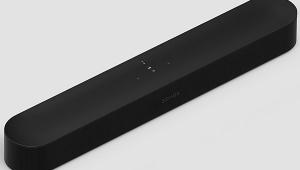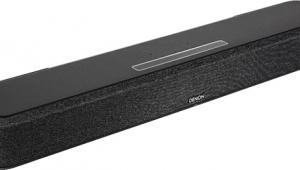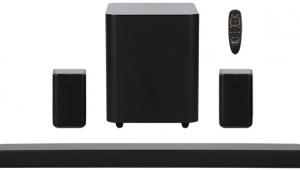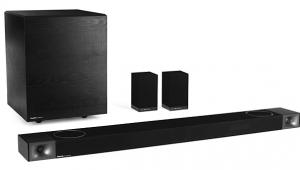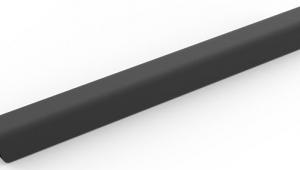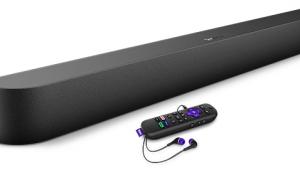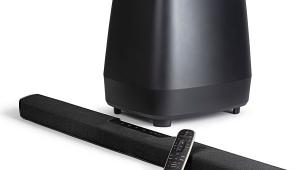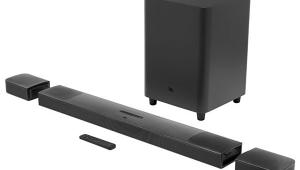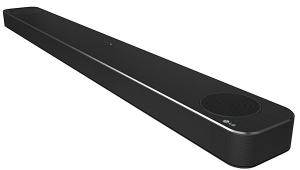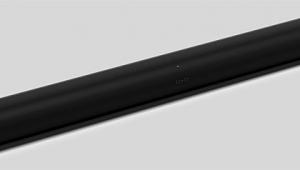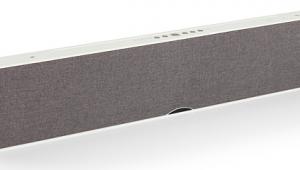The thoughtful design and quality construction are big selling points for me. The performance insights with tunnel rush and without the subwoofer are particularly useful.
Klipsch Flexus Core 200 Soundbar System Review
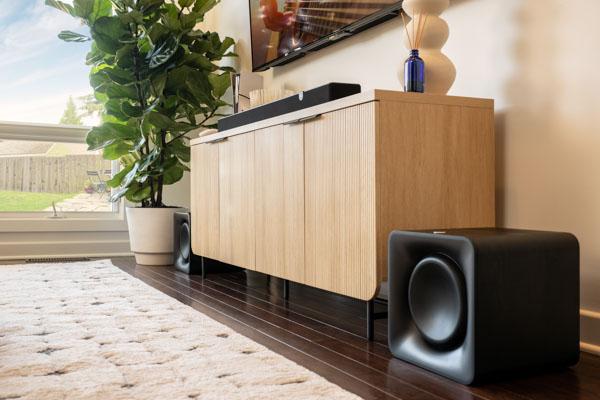
AT A GLANCE
Plus
Exceptional value in build and sound quality
Optional wireless sub and surrounds
Thoughtful and extensive adjustments
Easy-to-use remote and app interface
Minus
Needs the add-on sub for best dynamics
No DTS decoding
No rear-height surrounds...yet
THE VERDICT
Klipsch has partnered with Onkyo to deliver an audiophile-quality soundbar that is one of the best values for the money you'll find.
Dolby Atmos, once a costly premium, is enjoying a surge of popularity across a range of new audio gear. In particular, very good Atmos soundbars from capable audio brands are becoming common and less costly. These are made even more attractive today thanks to Dolby’s support in developing an immense catalog of evergreen music for spatial audio.
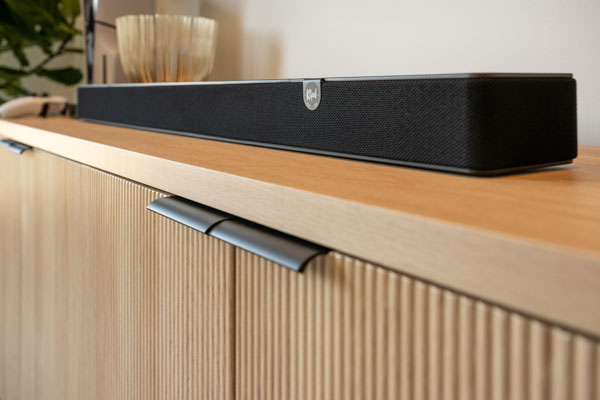
Clicking our links might earn us a commission—thanks for supporting Sound & Vision.
When I tested the Sonos Arc with the Era 300 speakers for Sound & Vision a while ago, I was shocked to find my Tidal account had sprouted dozens of Atmos album titles across every genre, and it’s been a thrill rediscovering much-loved music through new immersive mixes. So when I see an affordable $499 bar like Klipsch’s new Flexus CORE 200, I see the potential for a real, high-quality Atmos experience reaching the masses.
Features
The CORE 200 is one of two new Klipsch bars with a “Powered by Onkyo” tag, a reference to the famous AV electronics maker that has been a sister brand since 2021. From Klipsch’s own website, “This collaboration with Onkyo infuses hundreds of years of expertise, innovation, and extensive testing protocols. The integration of Onkyo technology into the Flexus Sound System represents a deliberate stride toward perfecting every aspect of sound reproduction within our soundbars.” Whether that’s just marketing or whether Klipsch really needed Onkyo’s help to perfect the soundbar is neither here nor there. But the proof is in the pudding, as they say, which we’ll get to shortly.
The Flexus line starts with the CORE 100, a $349, 2.1-channel model that sports a front-firing pair of 2.5-inch aluminum cone drivers and a pair of top-firing 4-inch paper cone woofers to support the claim of usability without a subwoofer. It’s touted as a Dolby Atmos bar, but with no up-firing height drivers, it relies instead on virtual Atmos processing.
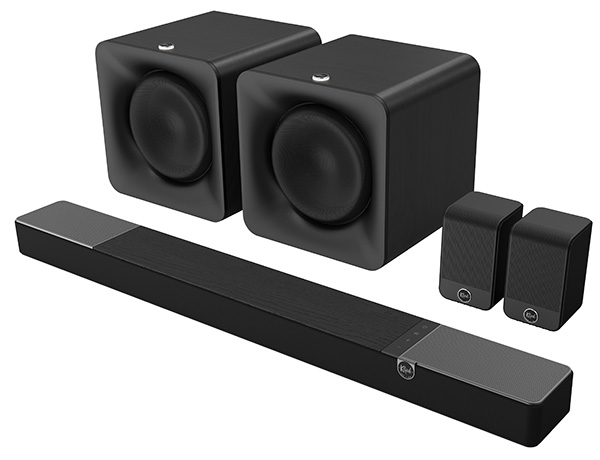
The CORE 200 tested here has a much wider profile at about 44 x 3 x 5 inches (WHD) and adds a dedicated center-channel array consisting of a pair of 2.5-inch aluminum drivers straddling a 0.75-inch horn-loaded aluminum dome tweeter. Also on board are a pair of full-range 2.5-inch aluminum drivers firing up from each end-cap for the front elevation channels. A total of 185 watts of amplification drives the bar.

Technically, it is a 3.1.2 system with the 4-inch woofers providing the .1 support from the acoustically sealed cabinet. But Klipsch has released an optional 10-inch wireless subwoofer, the Flexus SUB 100, for $299. It uses a woven paper cone woofer with an 80-watt amp in a sealed box measuring 13.19 x 13.38 x 13.75 and weighing 20.7 pounds. The system accepts up to two subs wirelessly. So, what the heck, they sent me a pair. The sub has an LFE input on the back if needed, along with a pairing button and a switch to designate it either Sub1 or Sub2 in a dual-sub system.
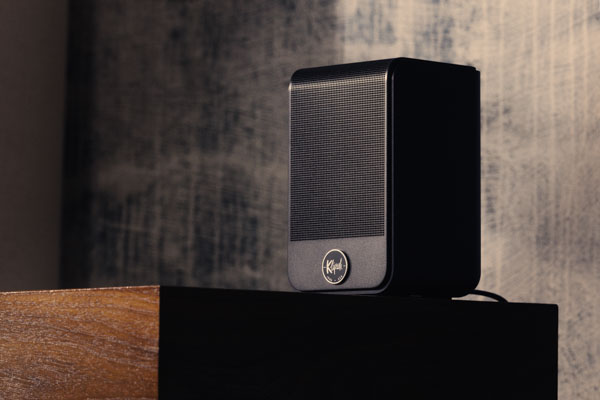
Also along for the ride were the Flexus SURR 100 wireless surround speakers. These stand about 4.13 x 6.75 x 4.13 inches (WHD) and cost $249 per pair. They are a strictly front-firing affair with a single 3-inch full-range paper cone driver with 50 watts of amplification. Klipsch mentions in the CORE 200’s user manual another surround model, the SURR 200, which was not yet released nor available for this review. Based on the graphic, it seems these will add top-firing rear height drivers, and for reasons explained below, they would be the better option. Likewise, the manual references a larger SUB 200 subwoofer that has also not been announced, perhaps a 12-incher. Klipsch isn’t ready to talk about these offerings and says they appeared in the manual erroneously, but be advised that these may be coming down the pike sooner rather than later.
Build quality for all three pieces in my sample system was surprisingly good for the price. The CORE 200 is built into a sealed metal and plastic enclosure with sufficient internal ribbing to control resonance; its 18.7-pound weight adds to the solid feel. Included L brackets for wall-mounting orient the bar with its height drivers facing up. The subwoofer has a sealed MDF cabinet that is neither the heaviest nor least resonant I’ve seen/heard, and to some degree, it sounded that way. But it is nicely constructed and has a pretty, faux woodgrain finish. The satellite surrounds, in sealed, molded plastic cabinets, are relative lightweights that offer a threaded insert in the back for wall or stand mounting.
The CORE 200’s industrial design features nicely rounded corners that are carried through to the sub and surrounds, and a top panel with a convincing black wood grain vinyl. The top-firing speaker grilles are perforated black metal, and the wraparound front grille is black stretch fabric. There is an alphanumeric status display behind the front grille that only becomes visible when a command is executed. A simple touch-control panel on top handles Power, Source toggling, and Volume Up/Down.
The rear panel jack pack includes a single HDMI port with eARC, which is required on the bar and your TV for passing uncompromised Dolby Atmos bitstreams. There’s also a TOSLINK optical digital input, an RCA subwoofer output, and a USB-C port for powering a device. It’s understood that you’ll be plugging HDMI source components into your TV and porting their signals to the bar through the eARC port, but it’s good to have alternate inputs. Also back there is a jack for an IR receiver, and a recessed USB-A port designated the Flexus Transmitter Port for the wireless dongle required to pair the bar with its matching wireless surrounds or sub. The dongle—only one is required—comes in the box with the sub or surrounds.
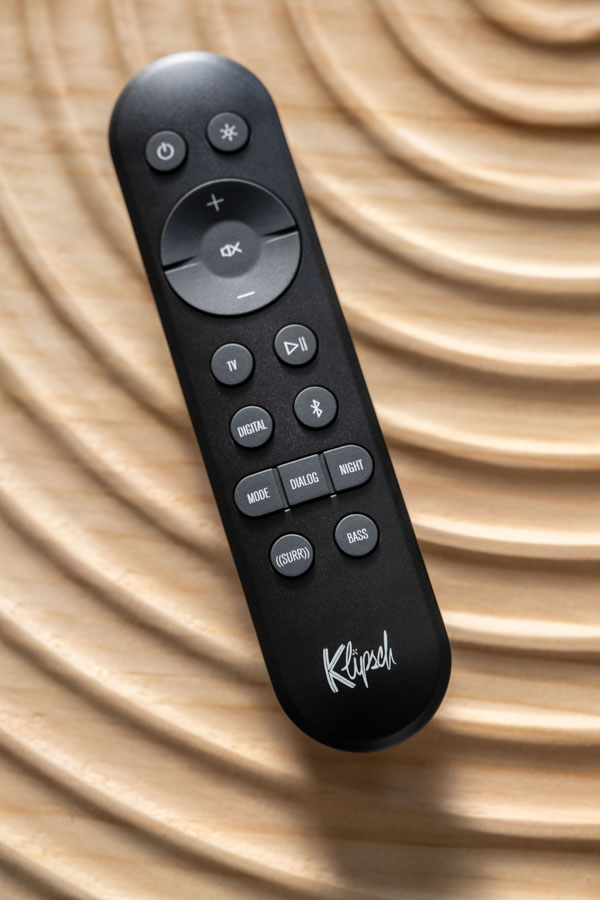
The CORE 200 ships with a nice 6-inch remote with a rounded back that is comfortable in the hand and surprisingly capable and easy to use. Along with a large volume rocker and Mute button, four buttons directly access the TV (HDMI), Digital (optical), or Bluetooth inputs. Another button selects the Movie or Music sound processing modes. Movie does Dolby processing up to Atmos 5.1.4 and recognizes stereo PCM or LPCM up to 8 channels. Music mode is also described as Atmos 5.1.4 capable, but disables surround virtualization and dialog enhancement for something more akin to an upmixed all-stereo mode. There is no DTS decoding on board, so DTS soundtracks need to be converted by the source to LPCM or Dolby.
Other remote functions include an effective multi-level Dialog booster and a Night mode, and there are on-the-fly level trims for Bass and the Surround channels. A final button lets you dim the brightness level of the LED display behind the grille, but you can also press-and-hold it to see what type of signal is being received and processed by the bar, be it Dolby Atmos, Dolby Surround, or PCM/LPCM.
Additionally, Klipsch has the intuitive iOS or Android Klipsch Connect app that provides similar functionality as the remote and adds some capabilities. These include a three-band equalizer with five presets plus the ability to customize your own, and the ability to check for and download online firmware updates. Overall, it’s a simple system in everyday use, one that turns on with your TV when it senses a signal and tracks volume changes on your set-top box or TV remote via HDMI-CEC. I have just one complaint about the interface overall: there appears to be no way to dim or turn off the 1-inch diameter LED ring power indicator that lights up, quite brightly, from the top panel of the SUB 100 subwoofer. It is an unsavory distraction during lights-out viewing. Have some black tape on hand.
Performance
For this temporary setup, I straddled the CORE 200 across a pair of ear-level speaker stands in front of the projection screen in my studio and ran it into the eARC HDMI port of a UST projector to which I had connected a UHD Blu-ray player. Music tracks came from the projector’s integrated Atmos-compatible Tidal app. I listened first to the bar alone on both music and movies to get a feel for its performance. I added a subwoofer, listened again, then added rear surrounds. Eventually, I added the second subwoofer to gauge its effect.
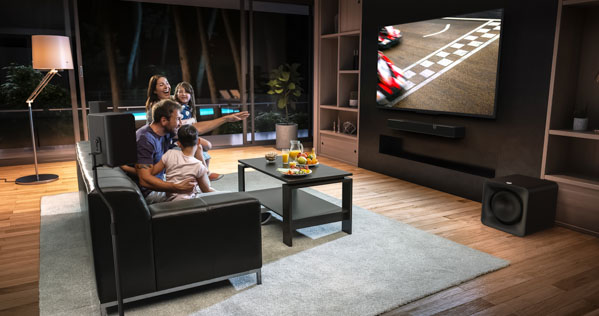
I have tested several soundbars that, like the CORE 200, claim to not require a subwoofer. In soundbar parlance, this means you typically get down to about 60 Hz before it starts rolling off—by no means a true substitute for a sub, but better than the average standalone bar. (The major exception was the Devialet Dione I tested for S&V in 2022, now priced at $2,000, with eight 5.3-inch, high-excursion oval woofers whose output at 24 Hz had barely declined at all from its peak.) Test tones in my room revealed that the pair of 4-inch woofers in the CORE 200 performed just a little better than expected. In the bar’s Flat EQ mode, bass output with Movie or Music processing was relatively even from 100 Hz down to about 50 Hz in my room, but with a noticeable bump at 60 Hz before SPL rapidly dropped below 45 Hz. Boosting the Bass EQ to its +6 setting goosed volume in the 80 Hz to 100 Hz range to match the bump at 60 Hz but did nothing to bolster low-end response.
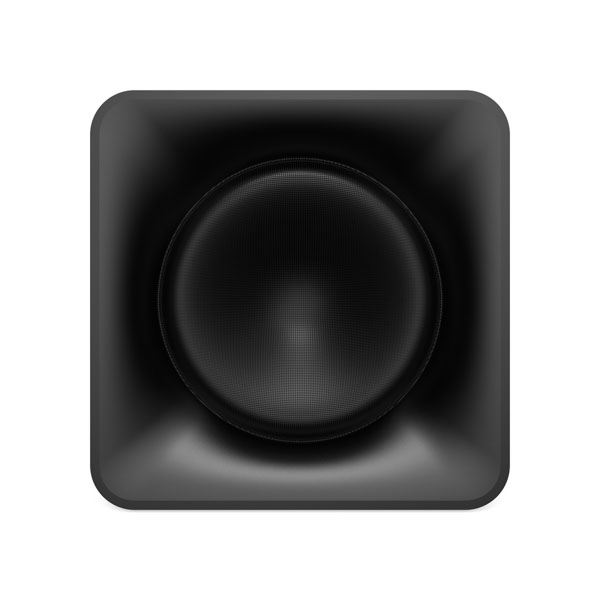
The standalone bar was quite good on stereo and Atmos music tracks, though not flawless. After a little break-in time to burn off a bit of edginess—something I normally don’t feel the need to recommend with a soundbar—its drivers were revealing enough in the mids and highs to expose poorly recorded music tracks and to help the better-sounding tracks from my Tidal reference playlist shine. The sound was open and unveiled, with a good amount of high-end detail. But besides the expected lack of deep bass that homogenized driving bass lines and drum thwacks, there was a slight coarseness to the sound that became evident when I moved volume up past 40 or so on the 0 to 50 scale. Like most soundbars today, the CORE 200 appears to utilize limiting circuitry to keep things linear and ensure the system’s speakers or amps aren’t overdriven to the point of obvious distortion or clipping.
There was plenty of volume to go around—Klipsch rates the bar at 99 dB max, and I was hitting 93 dB peaks from 9 feet away at the top volume setting on some of my louder test tracks. However, when the CORE 200 is pushed hard, the combination of physical limitations of the small drivers and possibly a lack of overall power reserves becomes evident in a subtle brittleness that makes it sound strained and thinner than it does at lower volumes. I acknowledged what the CORE 200 was doing correctly in the mids and highs, as well as its ability to track dynamic peaks and swells as they rode up and down. But its lack of authority and comfort with demanding, loud passages was holding back my full endorsement.
The good news is that adding the SUB 100 subwoofer substantially transformed the sound and addressed nearly all of my concerns. For starters, the system now demonstrated substantial low-end output. There was still an unwanted bump in response at 60 Hz, but after falling off a few decibels (dB) between 60 and 50 Hz, the bass remained almost flat to 30 Hz. Drum solos, EDM bass lines, and string double bass scales in jazz tracks took on solid presence and body. This was powerful bass, though with a tendency to sound boomy that I largely tamed by moving the sub out of its corner location and experimenting with the bass settings. You can’t adjust the crossover point or phase in the app or on the woofer, but the app lets you tune the sub channel level from +6 dB through -12 dB, and from there you have the system’s EQ to tune on the fly.
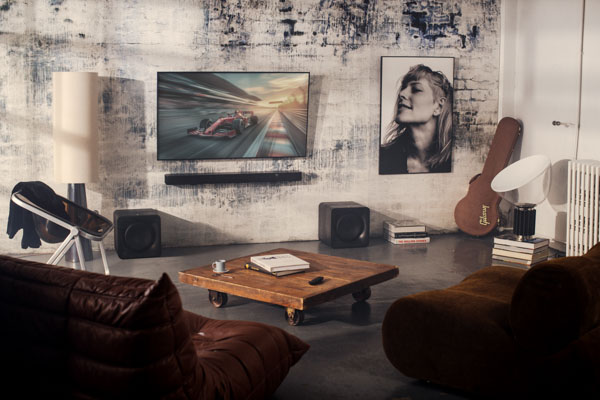
Equally important, adding the subwoofer greatly improved the system’s authority and allowed for a sense of ease without strain at higher volumes. Powerful soundtracks that combine effects and driving music, like the Top Gun: Maverick Atmos track, now offered greater clarity, control, and power at the lower volume settings, and mostly retained that as volume increased. Its ability to track the peaks and valleys associated with a building vocal crescendo or the slowly approaching roar of a squadron of fighter jets was also enhanced. With the system no longer overtaxed, its overall dynamic range and finesse seemed to improve.
Immersive Atmos movie and music tracks were well rendered, even before adding the rear surrounds. Running 5.1.2 Atmos test tones into the bar revealed that while the left, center, and right channels engaged some degree of help from the front height drivers to assist with the spatial effects, left and right height channel information is applied discretely to the top-firing drivers and woofers, resulting in an excellent bounce effect that precisely placed the virtual height speakers at ceiling height about a third of the way between the screen and my chair. This came into play with any well-mixed Atmos tracks (like the classic Dolby Leaf demo) where I could feel the top of the surround dome reach well into the room. However, without surrounds or rear height channels, it stopped well short of reaching the listening position.
With the CORE 200 supported by the sub, I fully engaged with the music and my listening sessions lengthened—a good sign when testing any audio product. Dynamic rock tracks like Maroon 5’s “Sunday Morning” played with purity, and the big, upfront vocals in tracks like this or John Mayer’s “Gravity” or Heather Rigdon’s sweet ballad “Heartbroken Me” were projected high up and out into the space. The width of the soundstage was somewhat limited by the usual soundbar proximity of the drivers, but I came to find that sitting further back from the bar allowed the system to spatially bloom horizontally. It works great from up close, but this bar likes a little distance to do its best work. The two surround processing modes were tasteful and for the most part well-balanced for music. Movie mode undoubtedly delivered the most spacious soundstage with either stereo or Atmos tracks and was best for precisely placing individual instruments and voices within the full breadth of the stage. But it suffers the usual slight blurring and subtle reverb effect on lead vocals caused by the spatial processing, and there were tracks where Music offered the better experience because of how it tightened up focus on the lead. Nonetheless, switching to Music typically resulted in a dramatic collapse of the soundstage, and I found myself using the Movie mode almost exclusively for both music and movies.
I eventually got around to adding the surrounds, placing them about 5 feet behind my listening couch on ear-level speaker stands. Adding them was as easy as powering them up and putting the bar and all the peripherals in Pairing mode with the buttons on each. The bar takes perhaps one to two minutes to recognize all the peripherals, after which channel levels can be adjusted in the app and trimmed on the fly with the remote.
Experienced home theater enthusiasts understand the value of rear surrounds to complete the ambient bubble for a truly immersive surround experience. All that’s asked of surrounds is that they provide sufficient volume without distortion and reasonably close timbre-matching to the front speakers to provide a seamless blend. The SURR 100 fulfilled these modest goals and, in conjunction with the CORE 200 and SUB 100, took the system’s value factor up another notch. Atmos music tracks were brought alive once the rear soundstage was lit up. The immersive remix of Al Green’s classic “Let’s Stay Together” now placed the listener right in the middle of the music, with opening horn blasts coming from behind, Green’s lead vocal up front way above the bar and slightly out into the room, and the back-up vocals harmonizing from the ceiling about midway back.

Special effects for movies, particularly ambient effects like overhead storm sounds, were convincingly rendered in the Movie processing mode. The only thing missing was that extra coherence you get with Atmos movies when there are active rear height channels. As an example, at the start of chapter 5 in Top Gun: Maverick, when Maverick (Tom Cruise) is about to be introduced to his students, the scream from an unseen airborne fighter jet outside the hangar enters the soundstage at front right, crosses to front left, then swings around the full left side to exit behind the viewer’s left ear. In this or any “.2” Atmos system with no rear height speakers, the jet will first track above the viewer and then, instead of flying directly overhead, transition down to ear level and out to the edge of the surround bubble as it moves from the front height to the rear surround drivers. It’s a subtle loss that most people won’t notice, but one that would be made right with height-capable rear surrounds, such as the upcoming SURR 200 option noted in Klipsch’s literature.
My last audition task was to add the second SUB 100 subwoofer. I heard little additive effect in my room and no dramatic change in the quality of bass, though if you have a space with very high cubic volume, or suffer from a room mode that sucks up bass or causes overload at the listening position, adding a second sub can be the answer to more even response. But I believe a single SUB 100, carefully placed and tuned to the extent possible, will be more than sufficient for the majority of rooms.
Conclusion
The Klipsch Flexus CORE 200 is a crafty wolf in sheep’s clothing—an audiophile-quality soundbar that’s simple and easy to use, yet provides a high level of features and tunability that harken to full-fledged, AV receiver-based home theaters. Could it be improved? Sure. I would have liked a little more authority and control from the CORE 200 right out of the box, whether by a more advanced amplifier or driver design. I’d have also liked to see microphone-based calibration from the app to customize subwoofer crossover/phase for my room and help tame the boominess without my intervention. And yes, rear height channels would have been nice.
But all these things cost money, and reasonable compromises need to be made when the target is Value with an uppercase V. The CORE 200 alone, at $499, is a steal if you have a small enough room and don’t have a hankering for hardcore volume that might overdrive it. It’s a sophisticated, well-thought-out product whose performance and refinement can only be exceeded for several hundred dollars more. Add the SUB 100 at $299 and the SURR 100 surrounds at $249, and for $1,047 you have a vastly upgraded system that’s hard to beat without stepping up to a fully outfitted Sonos Arc or a top-line Samsung system at $2,000 and above. So, I’m sold. Until I hear something better at this price, my recommendation to friends and family looking for a great-sounding, good-looking, easy-to-use soundbar will be the CORE 200.
Specs
Flexus CORE 200
DRIVERS: 2.25-inch aluminum cone mid- and full-range (6), 0.75-inch aluminum dome tweeter, 4-inch paper cone woofer (2); sealed metal and plastic enclosure
AMPLIFIER: Class D, 185 watts RMS
CONNECTIONS: HDMI eARC, optical digital, USB-C, USB-A (Flexus Transmitter Port), Bluetooth
WIRELESS: Wi-Fi
ACCESSORIES: Wall-mount L-brackets, remote control, HDMI and power cables
DIMENSIONS: (WxHxD inches) 44 x 3 x 5
WEIGHT: (pounds) 18.7
Flexus SUB 100
DRIVER: 10-inch woven paper cone, sealed MDF enclosure
AMPLIFIER: Class D, 80 watts
CONNECTIONS: RCA LFE, wireless Flex Transport 2.4 GHz
ACCESSORIES: Flexus Transport Wireless Dongle (USB-A), power cable
DIMENSIONS: (WxHxD inches) 13.19 x 13.38 x 13.75
WEIGHT: (pounds) 20.7
Flexus SURR 100
DRIVER: 3-inch paper cone, sealed plastic enclosure
AMPLIFIER: Class D, 50 watts RMS
CONNECTIONS: Wireless Flex Transport 2.4 GHz
ACCESSORIES: Flexus Transport Wireless Dongle (USB-A), power cable
DIMENSIONS: (WxHxD inches) 4.13 x 6.75 x 4.31
WEIGHT: (pounds) 2.5
- Log in or register to post comments


Hello everyone! I am very pleased with the Bonuses and Promo Code section on the 1win in Nigeria website: Bonus and Promo Code Insights . Here you can always find something interesting and useful to improve your gaming experience. The site offers a variety of bonuses, from generous welcome offers to regular promotions that add excitement to every visit. All promo codes are easy to use and their activation is hassle-free. I really liked how well this section is organised and how easy it is to find the right offers. This is a real find for all players! I would definitely recommend it!

It has great features and it's very affordable. Thank you. Home construction

ISO 27001 Consultants in Bangalore focuses on establishing a robust information security management system (ISMS) to protect sensitive data. It helps organizations manage risks, safeguard information assets, and comply with legal and regulatory requirements, ensuring business continuity and customer trust.

ISO 13485 Consultants in Bangalore ensures that medical device manufacturers adhere to strict quality management standards. It helps organizations demonstrate their commitment to producing safe, effective, and reliable medical devices while complying with regulatory requirements and industry best practices.

GHP Consultants in Dubai(Good Hygiene Practice) ensures that food businesses implement proper hygiene practices to safeguard food safety and quality. It helps organizations comply with local and international food safety regulations, reduce the risk of contamination, and enhance customer confidence in their products and services.

Locksmith Leeds offers a range of professional locksmith services tailored to meet your security needs. Whether you're locked out, require lock repairs, or need to upgrade your security system, our experienced team is here to assist. We provide prompt, reliable, and affordable solutions for both residential and commercial clients. Choose Locksmith Leeds for trusted services and peace of mind—your security is our priority.


